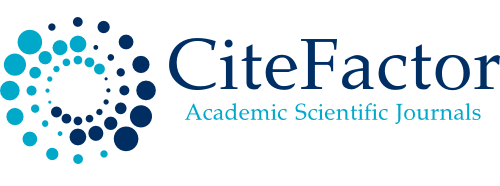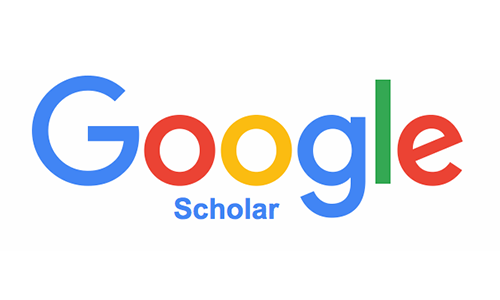University Orientation and Tutories: Student’s Notion about IT
DOI:
https://doi.org/10.61841/wm92sv12Keywords:
academic orientation,, college student, consultation, teacher, tutorial accompaniment.Abstract
The objective of the work is to analyze the notion of first-year students of the careers taught at the Faculty of Humanistic and Social Sciences of the Universidad Técnica de Manabí, on the orientation and tutoring at the level of higher education. The work offers an analysis of the functioning of the university tutoring space, based on the criterion that students have of new income on the relevance of the tutorial care process, viewed from the institutional part and the criterion of the students themselves. To do this, a bibliographic consultation was carried out that allowed analyzing theoretically the tutorial spaces from its emergence until the present date. It shows the results of a survey carried out on the students, where you could check the high concept that they have the realization of the tutorial spaces, as well as some difficulties that exist for the fulfillment of the activity by the teachers who perform it.
Downloads
References
1. Akpomedaye, E. (2019). Assessment of information and communication technology application in the teaching of office technology and management students in delta state polytechnics. International Journal of Social Sciences and Humanities, 3(3), 18-27. https://doi.org/10.29332/ijssh.v3n3.342
2. Alcívar, M. E. G., Delgado, Y. M. G., Rodríguez, A. K. M., & Romero, E. L. C. (2019). Reaction actions based on student learning assessment results. International Journal of Social Sciences and Humanities, 3(2), 197-207. https://doi.org/10.29332/ijssh.v3n2.315
3. Alcivar, R. D. B., & Ormaza, G. M. F. (2018). Academic use of engineering students in first semester systems. International Journal of Social Sciences and Humanities, 2(2), 155-163. https://doi.org/10.29332/ijssh.v2n2.155
4. Alvarez Gonzalez, M. (2008). Academic Tutoring in the european Higher Education area. Revista Interuniversitaria De Formacion Del Profesorado-Rifop, (61), 71-88.
5. Amen, J. S. L., Tuarez, M. E. S., & Pisco, J. M. P. (2019). The presence of anemia of university leveling students from dysfunctional families. International Journal of Health Sciences, 3(1), 9-16. https://doi.org/10.29332/ijhs.v3n1.253
6. Badillo, J. (2007). Mentoring as a viable strategy for improving the quality of higher education. Reflections around the course. CPU-e, Journal of Educational Research, (5), 115-136.
7. Bausela, E. (2004). The guiding function within the framework of the university. EduPsykhé, 3(1), 109-120.
8. Billaiya, R., Malaiya, S., & Parihar, K. S. (2017). Impact of socio economic trends on students in quality education system. International Journal of Social Sciences and Humanities, 1(1), 16-20. https://doi.org/10.29332/ijssh.v1n1.10
9. Bisquerra, R. (1996). Origins and development of psychopedagogical orientation. Madrid: Narcea.
10. Bisquerra, R. (1998). Models of orientation and psychopedagogical intervention. Barcelona: Praxis.
11. Campelo, A. Hollmann, J. & Viel, P. (2009). Contributions from tutoring to coexistence in school. Argentina: Ministry of Education of the Nation.
12. Capelari, I. (2009). The configurations of the role of the tutor at the Argentine university: Contributions to reflect on the meanings that are built on educational failure in higher education. Ibero-American Journal of Education, 49(8), 1-10.
13. Capelari, I. (2010). The mentoring systems in Argentina and their impact on universities: An approach to evaluation from an institutional perspective. Work presented at the First Argentine Congress of Tutoring Systems in careers of Exact and Natural Cs, Economic, Computer Science and Related. University of Buenos Aires, Argentina.
14. Capelari, I. (2016). The role of the tutor at the University: configurations, meanings and practices. Buenos Aires: SB.
15. Corcuera, F. (2002). The Bologna Declaration. The European Higher Education Area. The usefulness of ECTS. University of Las Palmas de Gran Canaria.
16. Coronado, M. & Gómez, J. (2015). Orientation, tutoring and accompaniment. In Higher Education. Analysis of student trajectories. Young people at their crossroads. Buenos Aires: Noveduc.
17. Djahimo, S., Bili Bora, D., & Huan, E. (2018). Student anxiety and their speaking performance: teaching EFL to Indonesian student. International Journal of Social Sciences and Humanities, 2(3), 187-195. https://doi.org/10.29332/ijssh.v2n3.235
18. EEES. (1999). Bologna Declaration. European Higher Education Area. Joint Declaration of the European Ministers of Education meeting in Bologna on 19 June 1999 University of Seville.
19. Enrique, J. (2010). Reflections around tutoring at the university a device of pairs. Lecture presented at the 1st Argentine Congress of Tutoria Sistemas. Oberá, Misiones, Argentina.
20. Estevez, A. G., Roche, J. R. F., Espinosa, A. H. R., & Rodríguez, D. L. (2018). Social skills training program to prevent alcohol consumption in university students. International Journal of Health Sciences, 2(3), 43-54. https://doi.org/10.29332/ijhs.v2n3.216
21. Ezcurra, A.M. (2007). New entry students: Democratization and responsibility of educational institutions. Sao Paulo: University of Sao Paulo.
22. Ferrer, J. (2003). The tutorial action at the University. In F. F. Michavila, and J. García (Coords.), Tutoring and new modes of learning at the university (pp.67-84). Madrid: Community of Madrid, Ministry of Education.
23. García, I. Cuevas, O. Vales, J. & Cruz, R. (2012). Impact of face-to-face and virtual tutoring on the academic performance of university students. Ibero-American Journal of Education,58(2), 1-11.
24. García, N. (2007). The tutorial function of the university in the current context of higher education. Interuniversity Journal of Teacher Training, 22(1), pp. 22.
25. González, L. (1973). A theoretical model of tutorial action at university. Pamplona: Eunsa.
26. González, V. (2006). The Tutor Teacher: A Need for 21st Century College. Cuban Journal of Higher Education, 36(2), 23-36.
27. Grant, L. S., Gode, B. S., & Amstrong, M. G. (2017). Ideology of translation concept approach on determining a decision by the translator. Linguistics and Culture Review, 1(1), 1-12. https://doi.org/10.37028/lingcure.v1n1.1
28. Hernandez, R. Fernández-Collado, C. & Baptista, M. (2010). Research Methodology. Fifth edition. McGraw- Hill / Interamericana Editores, S.A. DE C.V. ISBN: 978-607-15-0291-9.
29. Left over, L. (2007). Tutorial action plan in university schools: The role of the tutor teacher. Interuniversity Journal of Teacher Training, 22(1), 89-107.
30. Lledó, P. (2007). Gestión de proyectos. Buenos Aires: Pearson Educación.
31. Lobato, C. & Ilvento, C. (2013). University Orientation and Tutoring: A current approach. Journal of University Teaching, 11(2), 17-25. https://doi.org/10.4995/redu.2013.5564.
32. Martinez Clares, P., Martinez Juarez, M., & Perez Cuso, J. (2014). University tutorials and support sessions: an emerging environment at european universities. a study at the faculty of education at the university of murcia. rie-revista de investigacion educativa, 32(1), 111-138.
33. Menéndez, MDCR, López, ST, & García, CMF (2006). The impact of gender on the academic choices of Asturian students who finish ESO. Spanish Journal of Orientation and Psychopedagogy , 17 (2), 239-260.
34. Murray, S. Larry, S. (2002). Statistics. 3a. Ed. Macgraw - hill. Mexico 2002.
35. Nyandra, M., Kartiko, B.H., Susanto, P.C., Supriyati, A., Suryasa, W. (2018). Education and training improve quality of life and decrease depression score in elderly population. Eurasian Journal of Analytical Chemistry, 13(2), 371-377.
36. O'Dell, F. L., & Eisenberg, S. (1989). Helping students to make important transitions. The School Counselor, 36(4), 286-292.
37. Oliver, J. & Alvarez, P. (2000). Orientation and transition to higher education. Tenerife: ULL Publications Service.
38. Palacios, B. A. P., Anchundia, R. E. P., Pihuave, C. A. R., & Vidal, J. O. B. (2019). Formative assessment as tool to improve on teaching process–learning for students. International Journal of Social Sciences and Humanities, 3(3), 36-49. https://doi.org/10.29332/ijssh.v3n3.354
39. Reina, A. L. V. (2019). The brain and learning on initial students. International Journal of Health Sciences, 3(2), 38-43. https://doi.org/10.29332/ijhs.v3n2.329
40. Rodriguez, M.; Vazquez, A.; Villacreces, C.& Caballero, I. (2019). The Systems of Geographical Information,
41. Rodríguez, S. (1993). Theory and Practice of Educational Orientation. Barcelona: PPU.
42. Rodríguez, S. (2004). College tutoring manual. Resources for action. Barcelona: Octahedron.
43. Sadiyani, N. W. (2018). Strategy of improving student achievement in English learning through concentration approach. International Journal of Physical Sciences and Engineering, 2(1), 47-56. https://doi.org/10.29332/ijpse.v2n1.95
44. Sanchíz, L. (2008). Models of orientation and psychopedagogical intervention Publications of the Universitat Jaume I. Castelló de la Plana.
45. Sobrado, M. A. (2007). Relationship of water transport to anatomical features in the mangrove Laguncularia racemosa grown under contrasting salinities. New Phytologist, 173(3), 584-591.
46. Stake, R. E. (1999). Research with case studies. Madrid: Morata.
47. Suryasa, I. W., Prayoga, I. G. P. A., & Werdistira, I. W. A. (2018). Attitudes toward the use of internet for students. International Journal of Physical Sciences and Engineering, 2(2), 32-38. https://doi.org/10.29332/ijpse.v2n2.141
48. Suryasa, W, Mendoza, J.R.Z., Mera, J.T.M., Martinez, M.E.M., Gamez, M.R. (2020). Mobile devices on teaching-learning process for high school level. International Journal of Psychosocial Rehabilitation, 20(4), 330-340. https://doi.org/10.37200/IJPR/V24I4/PR201012
49. Sustainability, and Local Development in the Manabí Province. Journal of Advanced Research in Dynamical and Control Systems. 11(02-Special Issue), 1421-14-31.
50. Vázquez, A.; Rodríguez, M.; Villacreses, C. & Velez, A. (2019). Journal of Advanced Research in Dynamical and Control Systems. 11(05-Special Issue), 451-458.
51. Vélaz de Medrano. (1998). Psychopedagogical Orientation and Intervention. Concepts, Models, Programs and Evaluation. Malaga: Aljibe.
52. Wartawan, P. G. (2017). The effectiveness of the use of portfolio assessment by controlling prior knowledge to enhance scientific attitude among senior high school students. International Journal of Physical Sciences and Engineering, 1(3), 9-18. https://doi.org/10.21744/ijpse.v1i3.54
53. Widana, I.K., Sumetri, N.W., Sutapa, I.K., Suryasa, W. (2020). Engineering System of Research Master Plan for Better Cardiovascular and Musculoskeletal Health Quality. Computer applications in engineering education. https://doi.org/10.1002/cae.22202
54. Widiartini, N. K., & Sudirtha, I. G. (2019). Effect of KWL learning method (know-want-learn) and self- assessment on student learning independence vocational high school. International Journal of Social Sciences and Humanities, 3(2), 277-284. https://doi.org/10.29332/ijssh.v3n2.331
Downloads
Published
Issue
Section
License

This work is licensed under a Creative Commons Attribution 4.0 International License.
You are free to:
- Share — copy and redistribute the material in any medium or format for any purpose, even commercially.
- Adapt — remix, transform, and build upon the material for any purpose, even commercially.
- The licensor cannot revoke these freedoms as long as you follow the license terms.
Under the following terms:
- Attribution — You must give appropriate credit , provide a link to the license, and indicate if changes were made . You may do so in any reasonable manner, but not in any way that suggests the licensor endorses you or your use.
- No additional restrictions — You may not apply legal terms or technological measures that legally restrict others from doing anything the license permits.
Notices:
You do not have to comply with the license for elements of the material in the public domain or where your use is permitted by an applicable exception or limitation .
No warranties are given. The license may not give you all of the permissions necessary for your intended use. For example, other rights such as publicity, privacy, or moral rights may limit how you use the material.









